Introduction
Overview of BDI
The Basic Data Infastructure (BDI) is a framework that enables services to allow unknown clients to access their APIs if these clients are known to, authenticated by, and authorized by other BDI services. This allows networks of organizations, such as those in the logistics sector, to share data securely and efficiently without the need for an overarching organization to coordinate it all. BDI allows loose coupling of services, using standards where possible, but without requiring them. Even within this loose structure, BDI allows for secure and efficient access to APIs.
Architecture reference
The full width of the Basic Data Infrastructure framework is described in the BDI architecure reference site. This developer portal focuses on the currently available components and API specifications.
Key Concepts and Components
The core services in a BDI architecture are the API consumer, the Service Provider, Association Register, and the Authorization Register.
Data Owner
The party who is entitled to have control over data and access to data, and controls decision on data sovereignty and trust sovereignty. It is responsible for authorization policies kept in an Authorization Register.
Service Provider
The Service Provider exposes an API that is accessible to authenticated and authorized clients. Only the authentication and authorization are standardized - BDI does not mandate any standards for the API itself. Some standards are recommended (Open Trip Model), but the API may provide any kind of data in any format, whether that’s JSON, XML, CSV or a custom binary format.
Data Consumer
The Data Consumer is able to request authentication and authorization via the BDI services, and must then call the API of the Service Provider. Since no mandatory standards for data exchange exist, it is the responsibility of the Data Consumer to know how to interact with the Service Provider and to parse its data format.
Association Register
The Association Register is a register of all known participants in the system. There is no single global system; instead, there are many BDI compatible systems, and therefore many Association Registers. For every participant, they store its ID, current compliance status, legal agreements, etc. They also have a list of Authorization Registers for each participant. The purpose of Association Registers is to provide up-to-date information about all participants.
Authorization Register
The Authorization Register acts as an information point on authorizations to data belonging to a Data Owner. The register can follow any logic required by the Data Owner (role-based, permission-based, etc.). A Data Consumer can give it a request for what resource they would like to access, via what API call, and in what way (read, create, update), and it will give out a digital permission slip, if the Data Consumer indeed has access to that resource. This permission slip, known as “delegation evidence” can then be passed to the Service Provider. The Service Provider can use the Delegation Evidence in its authorization logic.
Developer’s Role in BDI
The main way in which developers participate in BDI is by writing Data Consumers and Service Providers. It is important to understand the role and purpose of all components involved, in order to maintain the security of the services. The largest part of working in a BDI architecture is managing credentials, calling the Association Register and Authorization Register services, and checking the output of these services. Skipping steps, such as not verifying the signature of a JSON Web Token, will compromise the security of the service you are implementing.
Technical Overview
All services provide a /connect/token endpoint used to get a Bearer Token, which is needed to access other calls on the service. The Association Register has a /parties endpoint which is used to retrieve information about specific participants. It also has a /trusted_list which lists all Certificate Authorities that are trusted.
The Authorization Register has a /delegation endpoint which you can use to obtain a Delegation Evidence JWT.
The Service Provider may have any number of API calls, which are accessible with authentication in the form of a Bearer Token, and authorization in the form of Delegation Evidence.
